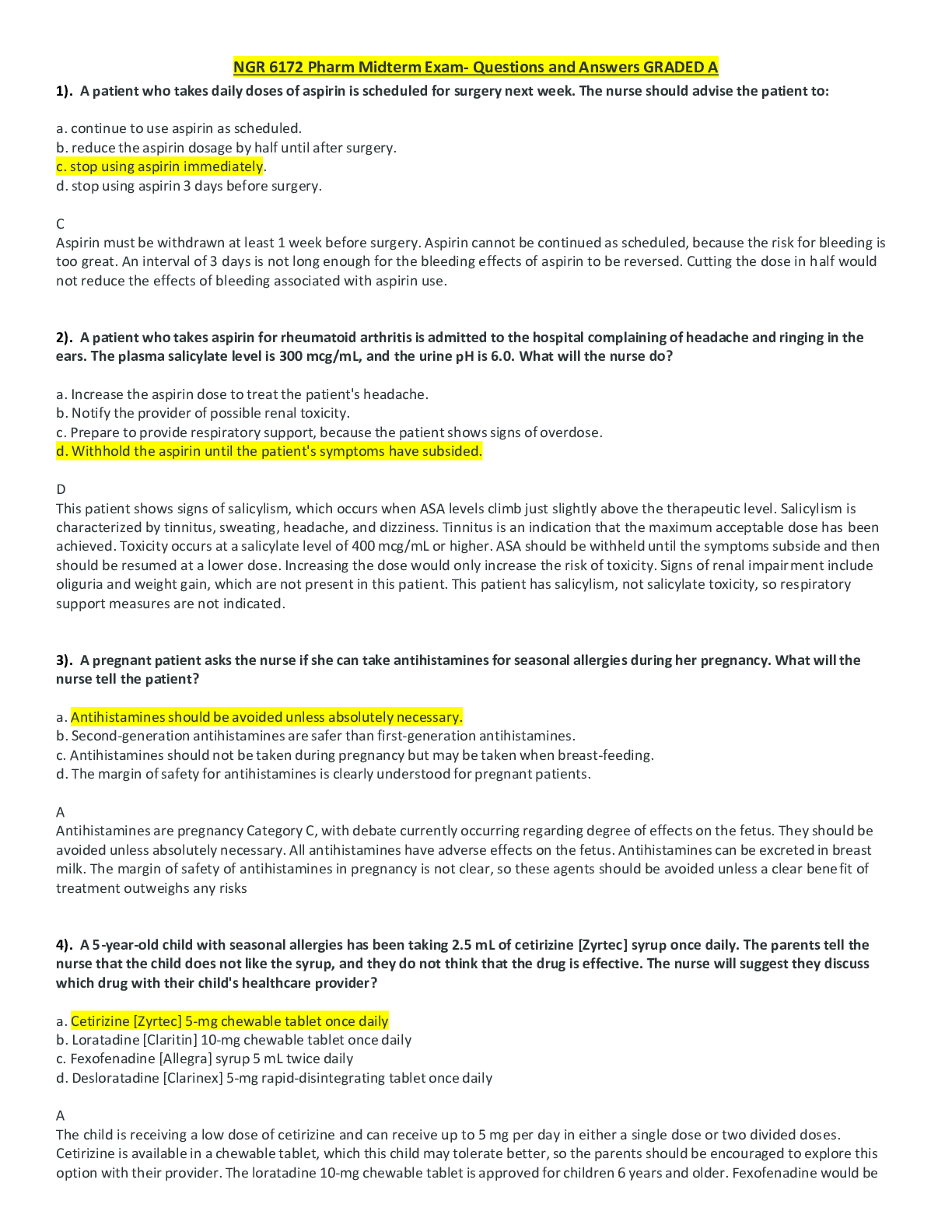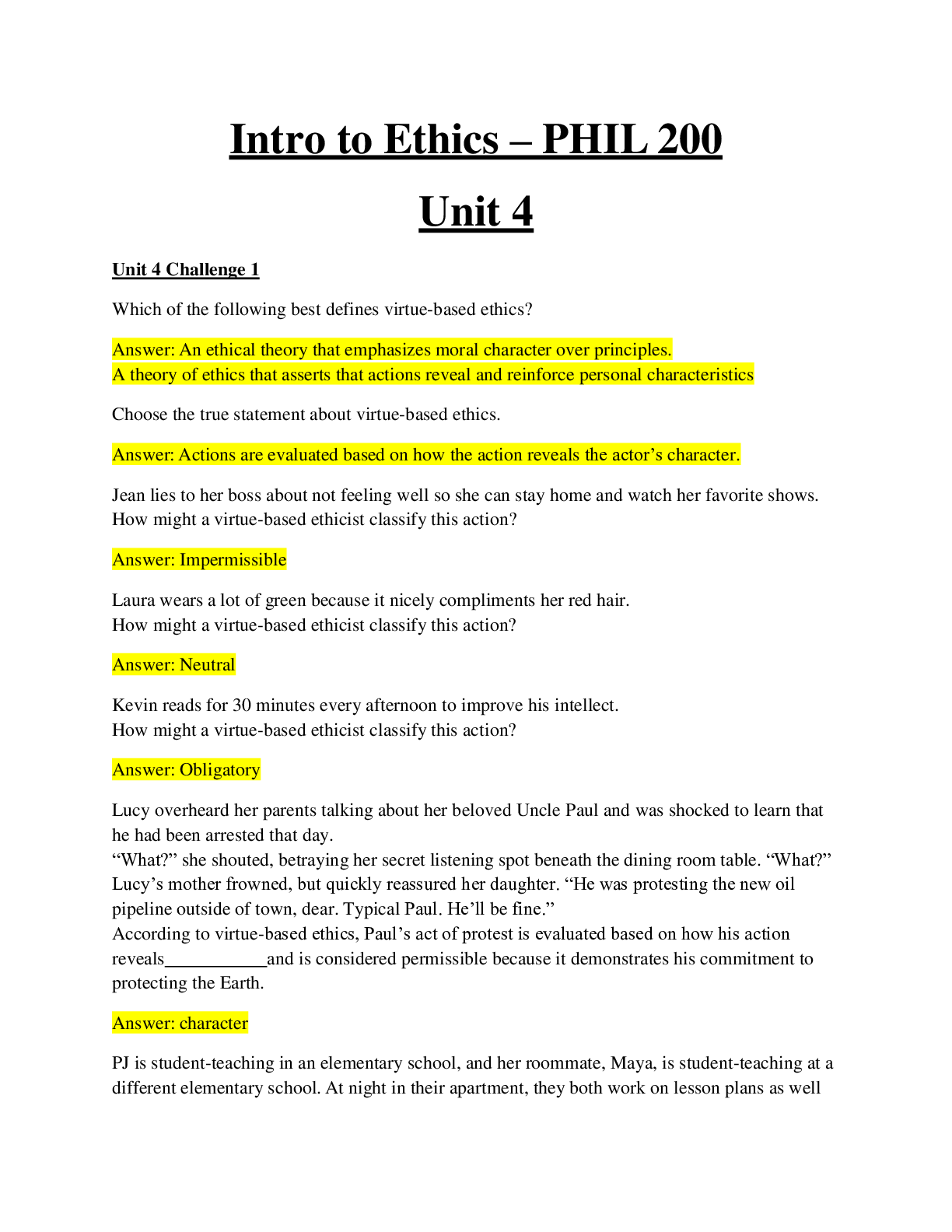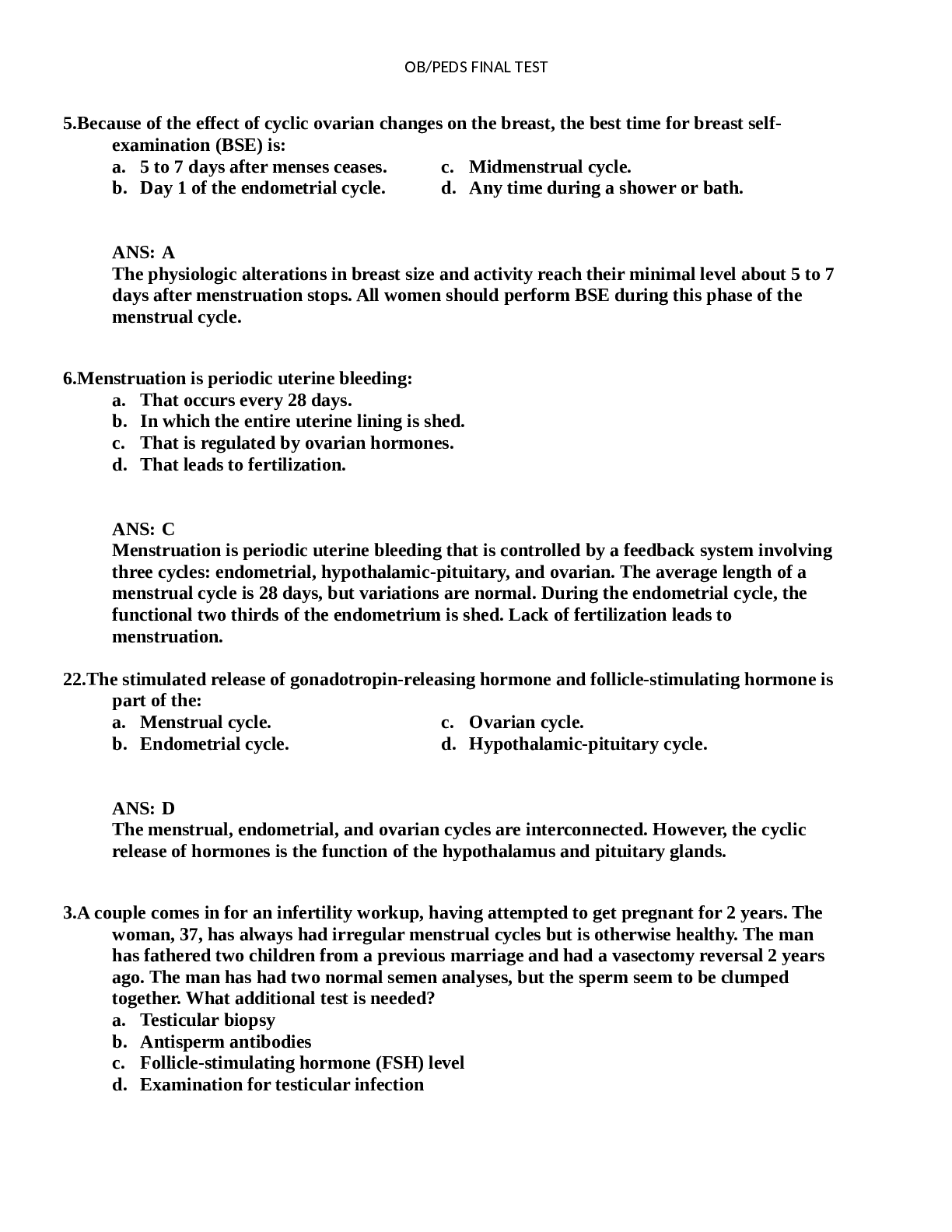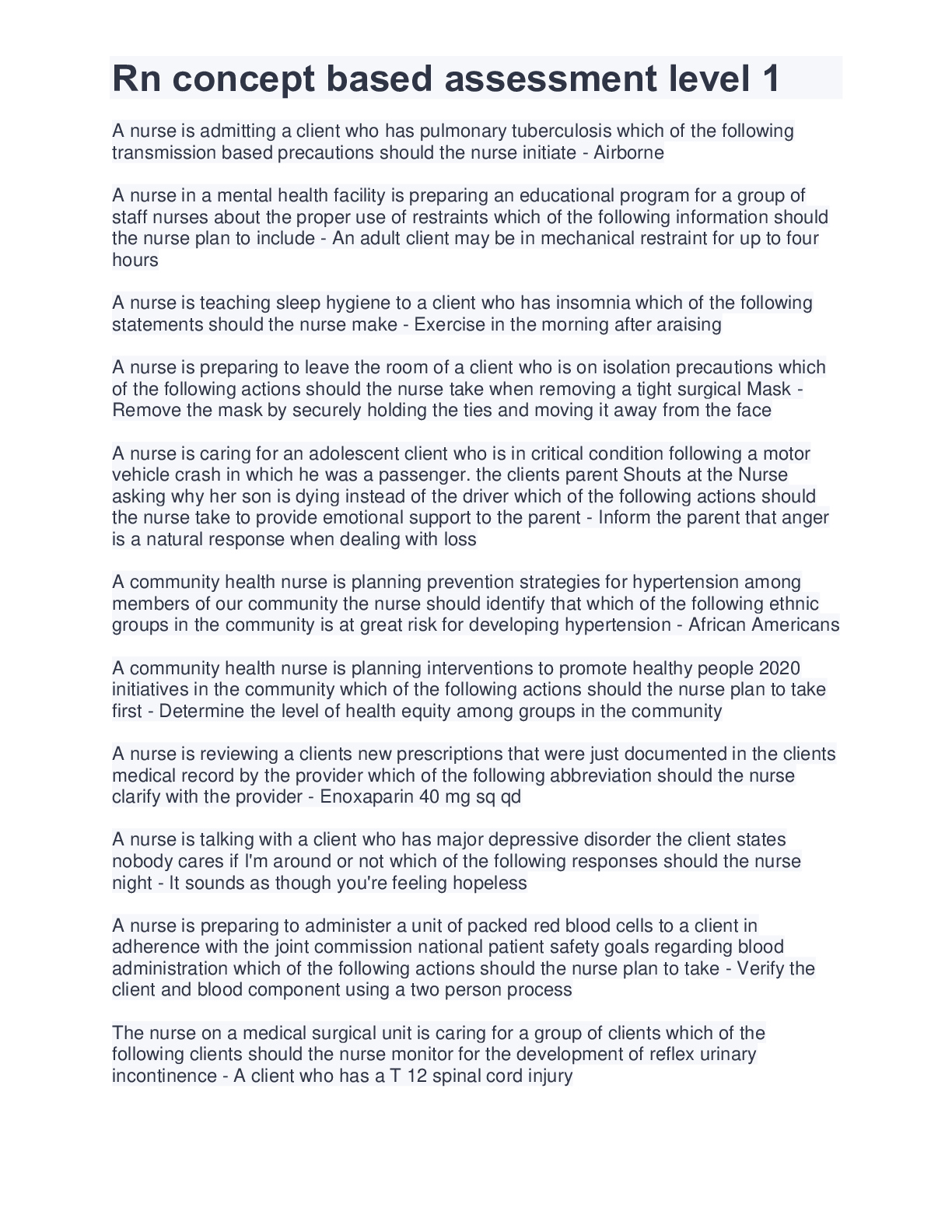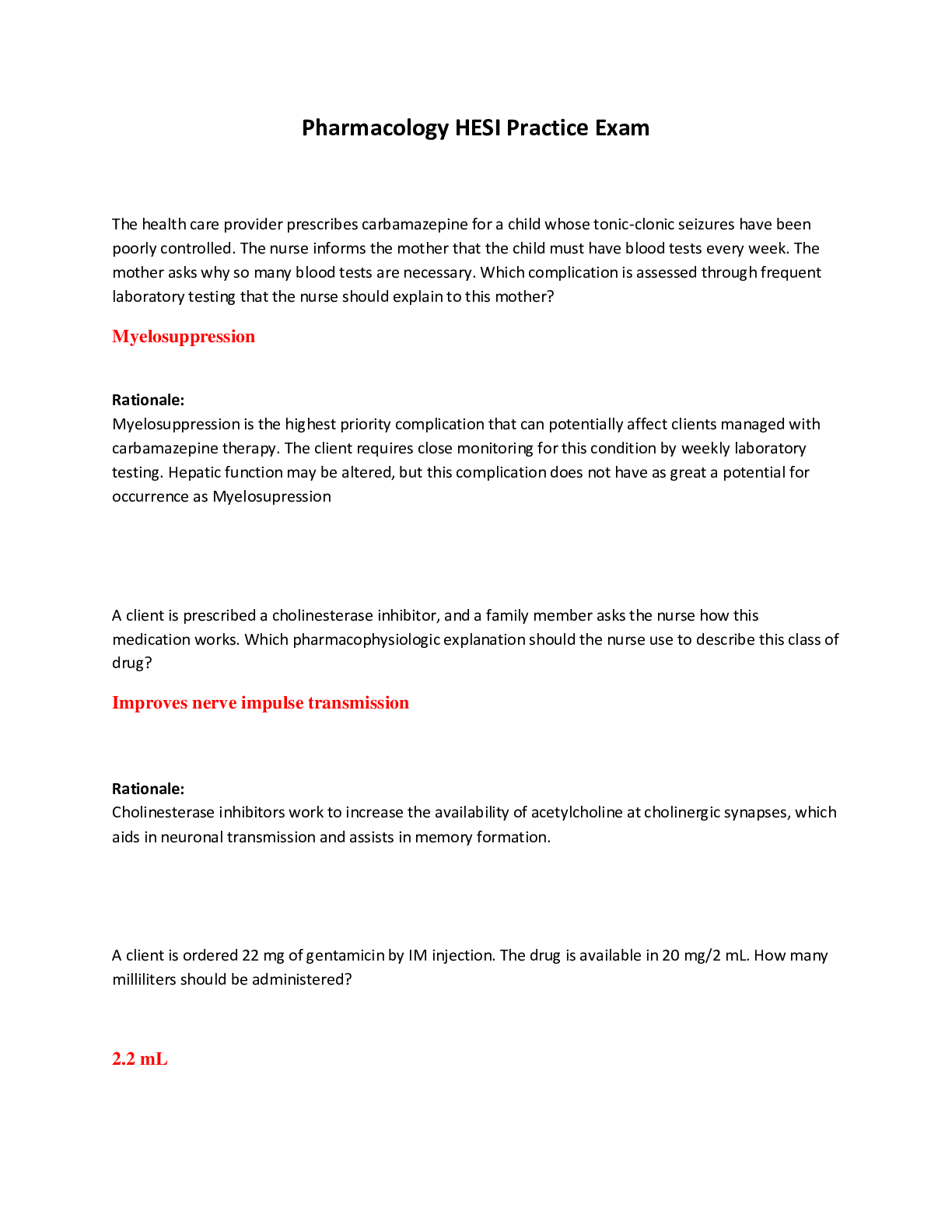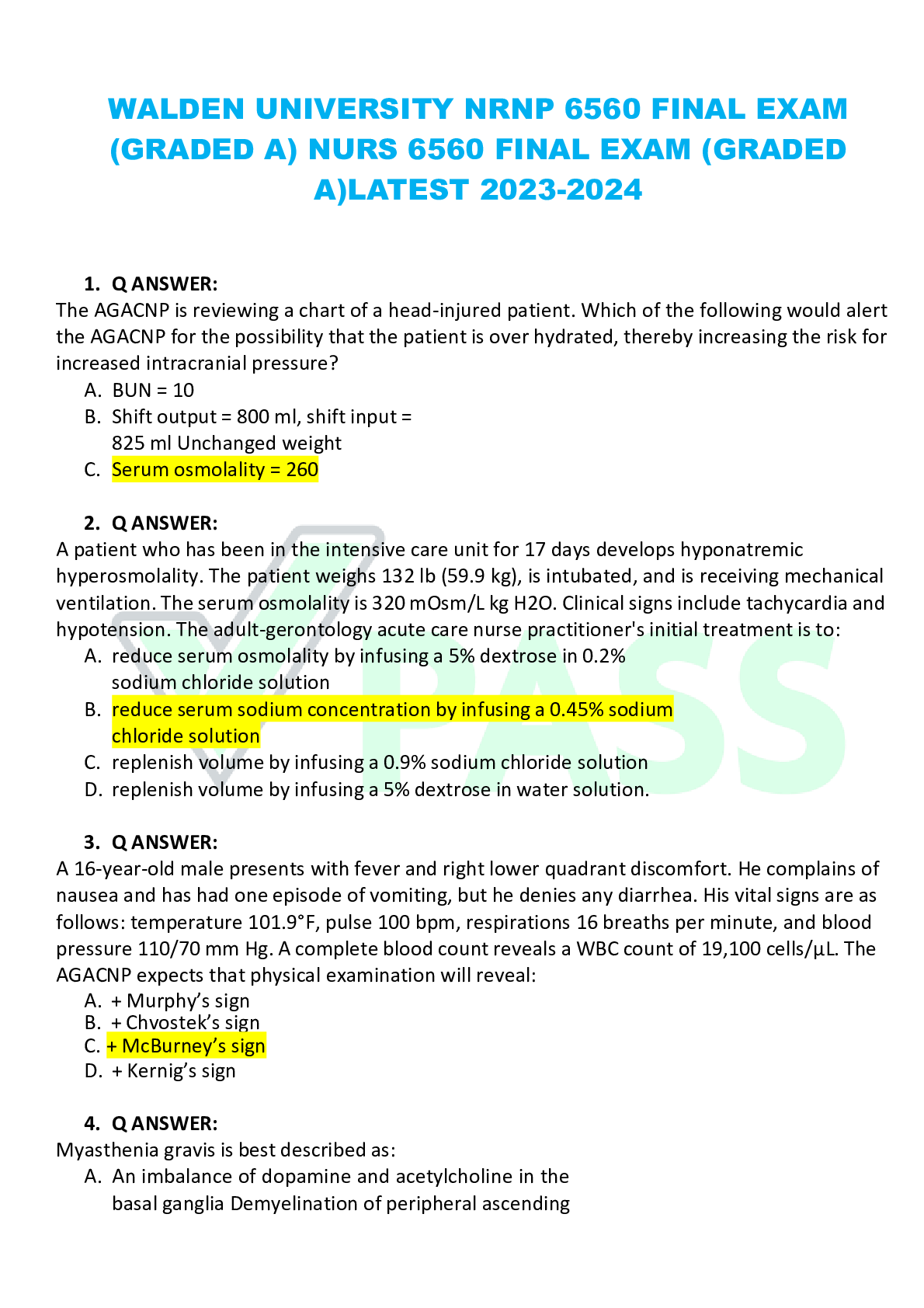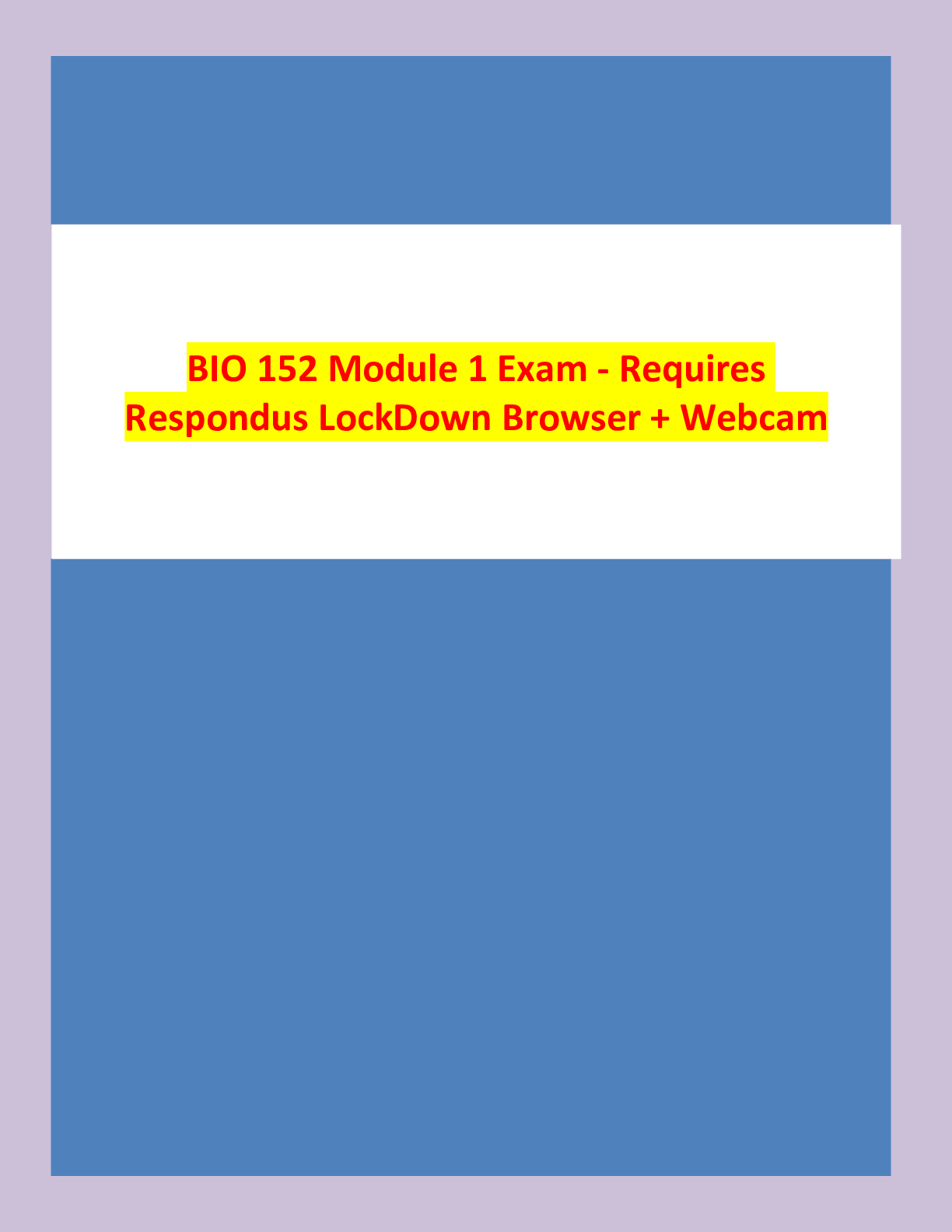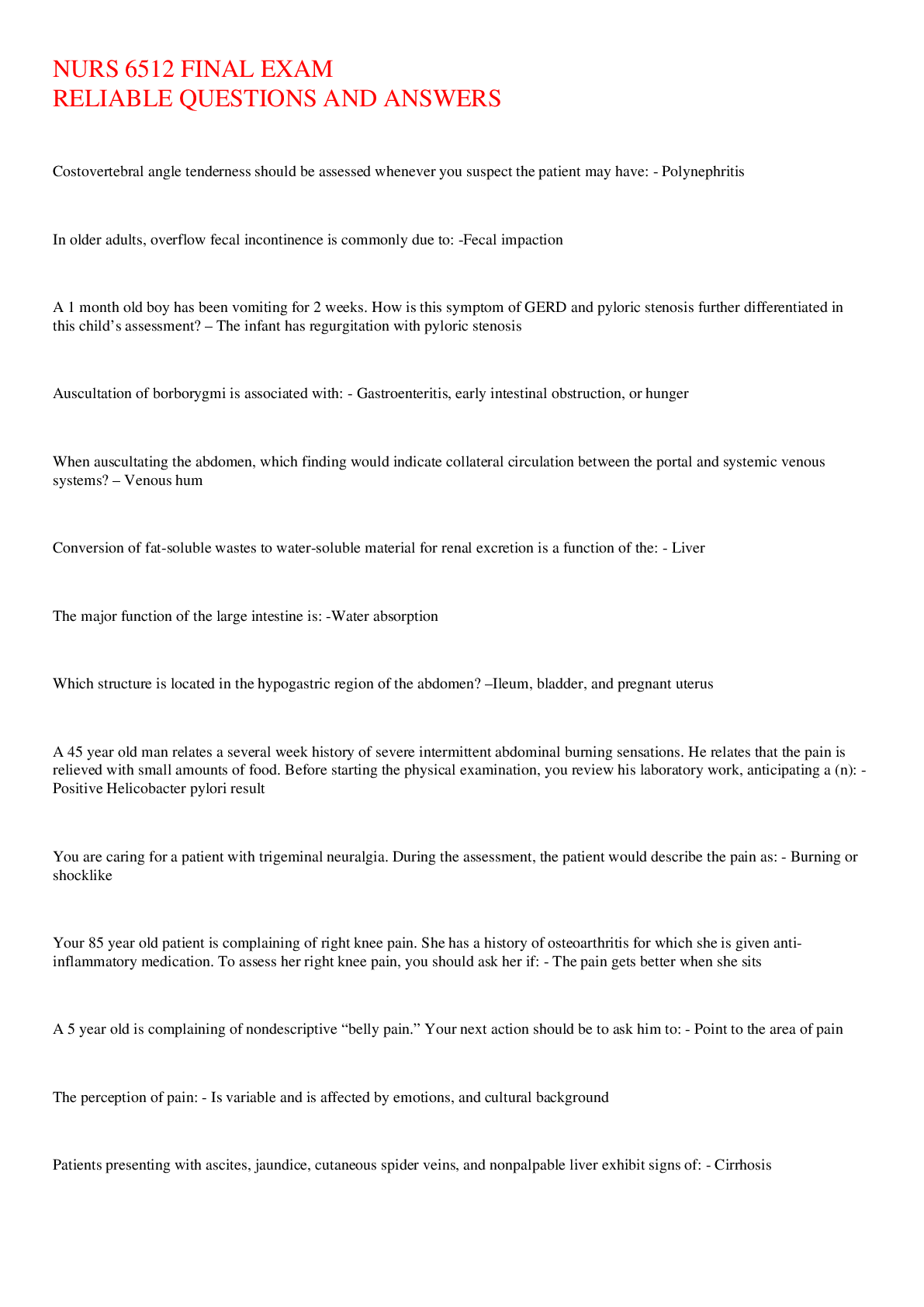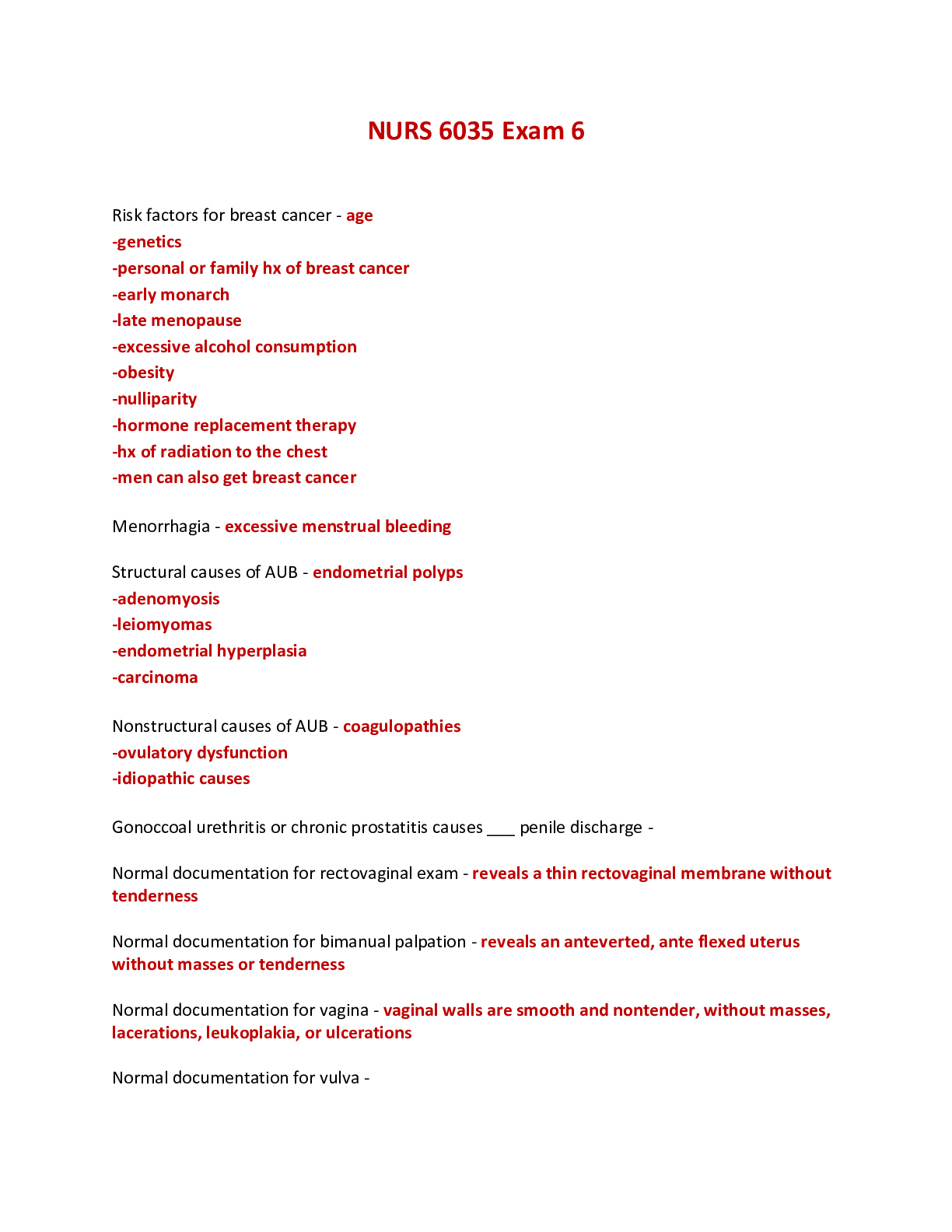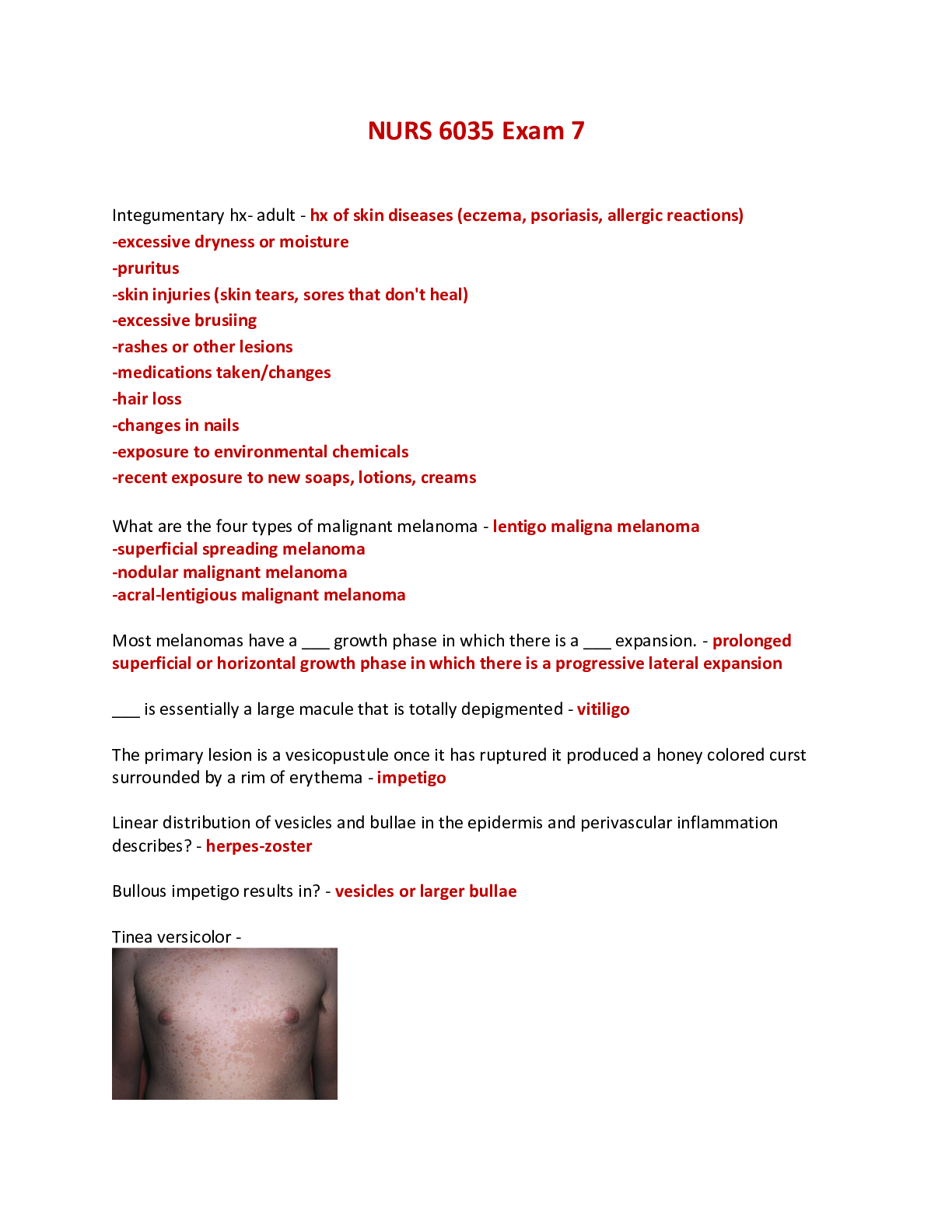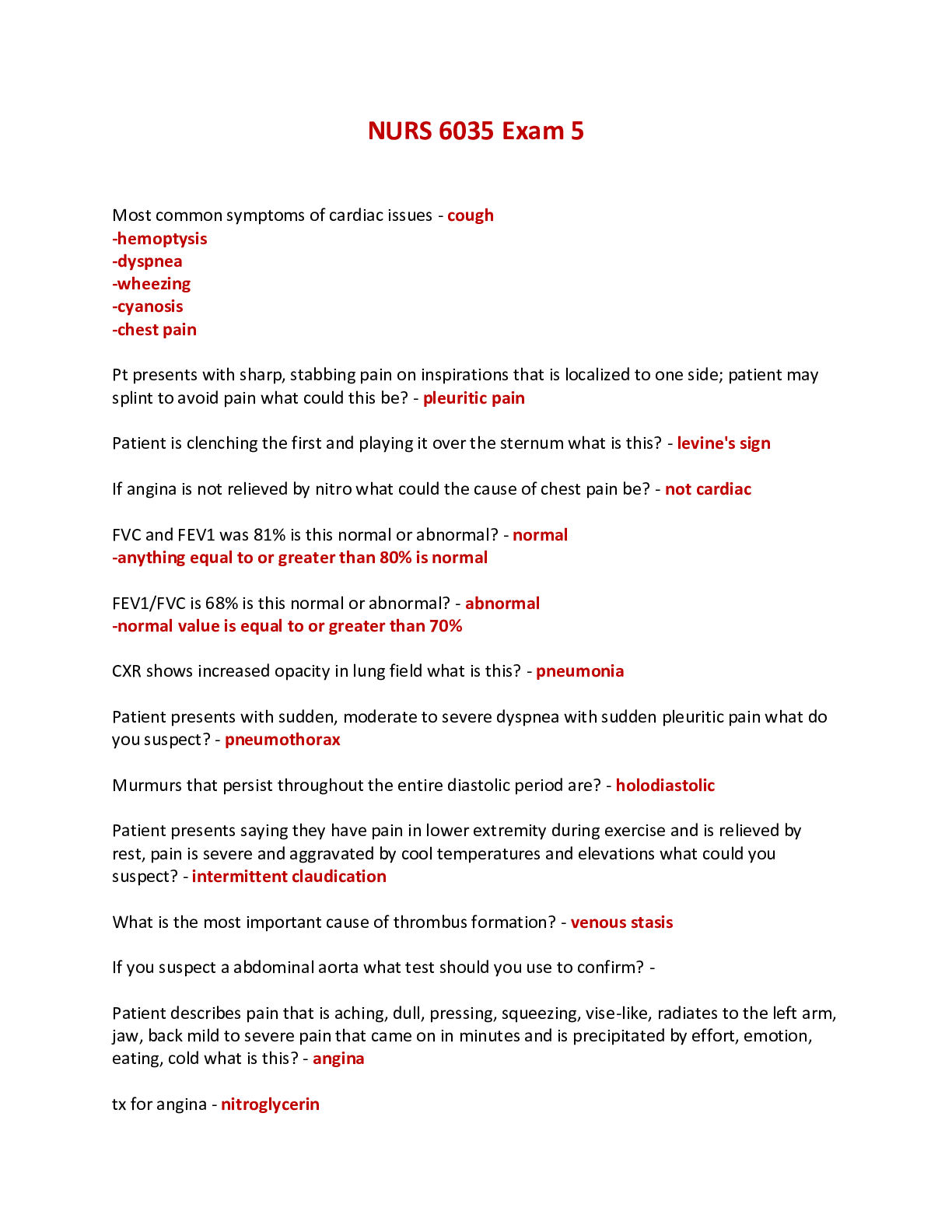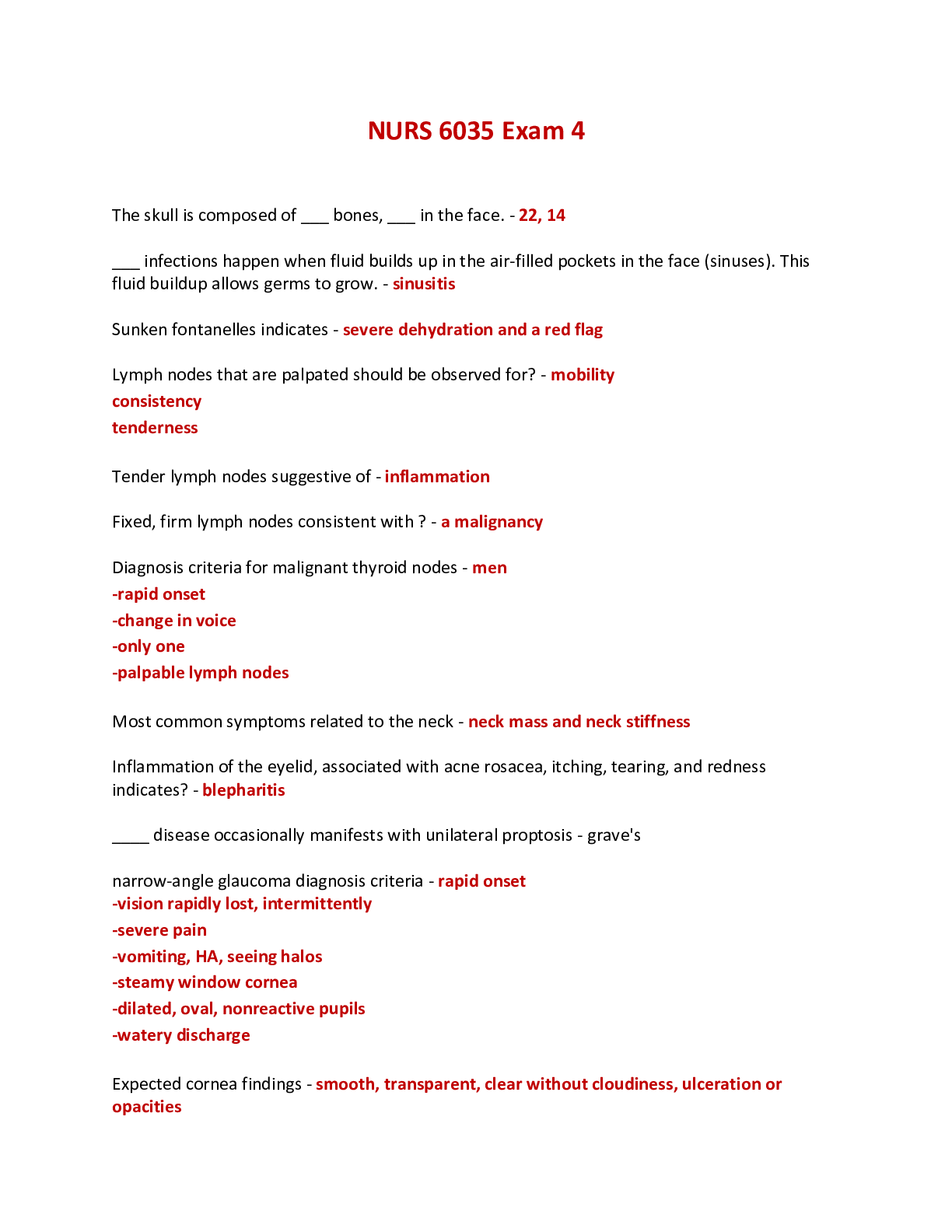Geology > EXAM > SCIN 138 Week 3 Exam - Questions and Answers( Complete Solution Rated A)top score (All)
SCIN 138 Week 3 Exam - Questions and Answers( Complete Solution Rated A)top score
Document Content and Description Below
Week 3 Exam (timed and single access) Return to Assessment List Part 1 of 2 - 44.0/ 48.0 Points Question 1 of 25 0.0/ 4.0 Points Which of the following would experience the most amount of damage from ... an earthquake? A. a brick building in an area underlain by sandstone B. a brick building in an area underlain by granite C. a brick building in area underlain by unconsolidated sand D. a brick building in area underlain by water-saturated sand Question 2 of 25 4.0/ 4.0 Points Which type of waves are compressional in nature? 669410 Week 3 Exam (tim A. S B. P C. L D. C Question 3 of 25 4.0/ 4.0 Points Which of the following statement is the most accurate? A. Earthquakes are caused when water or oil penetrate into the subsurface and cause a lubricating effect. This causes the rocks to slip. B. Earthquakes are caused by an increase in magma pushing its way through transform boundaries. C. Earthquakes are caused when stresses on rocks are too great and the rock breaks, typically along fault lines or plate boundaries. Question 4 of 25 4.0/ 4.0 Points If you are interested in only knowing the amount of damage caused by the earthquake, which scale would you consult? A. the Richter Magnitude scale B. the Modified Mercalli scale C. the Magnitude Moment scale D. the Seismic Moment scale Question 5 of 25 4.0/ 4.0 Points Which of the following statement is correct? A. P or primary waves are compressional waves and travel the fastest. B. P or primary waves are compressional waves but they only travel through solids. C. P or primary waves are shear waves and travel the fastest. D. P or primary waves are compressional waves and travel the slowest Question 6 of 25 4.0/ 4.0 Points What is a shadow zone and why does it exist? A. A shadow zone appears on the opposite side of the planet from the earthquake source because P waves cannot move through liquid. B. A shadow zone appears on the opposite side of the planet from the earthquake source because S waves cannot move through liquid. C. A shadow zone appears on the same side of the planet as the earthquake source because S waves cannot move through liquid. D. A shadow zone appears on the same side of the planet as the earthquake source because P waves cannot move through liquid. Question 7 of 25 4.0/ 4.0 Points If you are afraid of earthquakes, where would you NOT want to live? A. the central portion of South America B. the east coast of South America C. the west coast of South America Question 8 of 25 4.0/ 4.0 Points Which of the following is NOT associated with earthquakes? A. liquefaction B. lahar C. sand volcano D. seiche E. tsunamis Question 9 of 25 4.0/ 4.0 Points What is the feature called where most active earthquakes (and volcanoes) are found? A. the Atlantic Ring of Fire B. the Arctic Ring of Fire C. the Pacific Ring of Fire D. the Japan Ring of Fire Question 10 of 25 4.0/ 4.0 Points The spot on the surface directly above where the earthquake occurred is called the what? A. earthquake center B. focus C. fault plane D. epicenter Question 11 of 25 4.0/ 4.0 Points Which of the following is a secondary hazard associated with earthquakes? A. tsunami B. liquefaction C. seiche D. All are secondary hazards Question 12 of 25 4.0/ 4.0 Points If you are interested in knowing the most accurate calculation of the amount of energy released by an earthquake, which scale would you consult? A. Richter Magnitude cale B. Modified Mercalli scale C. Magnitude Moment scale D. Seismic Moment scale Part 2 of 2 - Igneous Processes and Volcanoes 52.0/ 52.0 Points Question 13 of 25 4.0/ 4.0 Points Melting is common at which plate boundary? A. divergent B. transform C. convergent D. A and C Question 14 of 25 4.0/ 4.0 Points A device that is used to monitor ground deformation is called a ________. A. seismograph. B. tiltmeter. C. level D. Brunton compass E. spectrometer. Question 15 of 25 4.0/ 4.0 Points Ash and lapilli are commonly found in ________. A. basaltic magma. B. lava. C. pyroclastic flow. D. rhyolitic magma Question 16 of 25 4.0/ 4.0 Points Partially melting an ultramafic rock produces a magma with a _________ composition. A. intermediate B. ultramafic C. felsic D. mafic Feedback: Melting an ultramafic mantle rock (like peridotite composed of olivine and pyroxene) only melts some of the lower temperature minerals (like pyroxene) thus producing a mafic magma. Partial melting produces a more silica-rich magma relative to the original rock that is melting. Question 17 of 25 4.0/ 4.0 Points If volatiles such as water vapor and carbon dioxide are added to a rock, what will happen to the melting temperature? A. The melting temperature of a rock will decrease. B. Pressure will increase. C. The melting temperature will not change. D. The melting temperature of a rock will increase. Feedback: Adding volatiles to a rock, like adding salt to ice on a road, lowers the melting temperature of a rock. This is shown by the green solidus line shifting to the left on the diagram. Question 18 of 25 4.0/ 4.0 Points If a rock contained amphibole, potassium feldspar (orthoclase), biotite, and quartz, as the rock is heated, which mineral would melt first? A. amphibole B. potassium feldspar (orthoclase) C. quartz D. biotite Feedback: According to Bowen's Reaction Series, quartz would melt first because it is in the lowest position on the diagram and thus has a lower temperature of crystallization/melting. Question 19 of 25 4.0/ 4.0 Points Which rock composition has the most amount of silica? A. mafic B. intermediate C. felsic D. ultramafic Feedback: Felsic rocks have the most amount of silica (Si02) with abundant quartz and feldspar minerals and the least amount of iron and magnesium. Remember that “felsic” stands for “feldspar” and “silica”. Question 20 of 25 4.0/ 4.0 Points Lahars and pyroclastic flows both have what in common? A. They are both composed of gas. B. They are both composed of water. C. They both move at speeds >120 mph D. They are both composed of rock fragments Question 21 of 25 4.0/ 4.0 Points A sill runs ________ to the surrounding rock. A. perpendicular B. at an angle compared C. parallel D. in no particular relation Question 22 of 25 4.0/ 4.0 Points Which mineral has the highest temperature of crystallization? [Show More]
Last updated: 1 year ago
Preview 1 out of 19 pages

Reviews( 0 )
Document information
Connected school, study & course
About the document
Uploaded On
Mar 05, 2022
Number of pages
19
Written in
Additional information
This document has been written for:
Uploaded
Mar 05, 2022
Downloads
0
Views
37


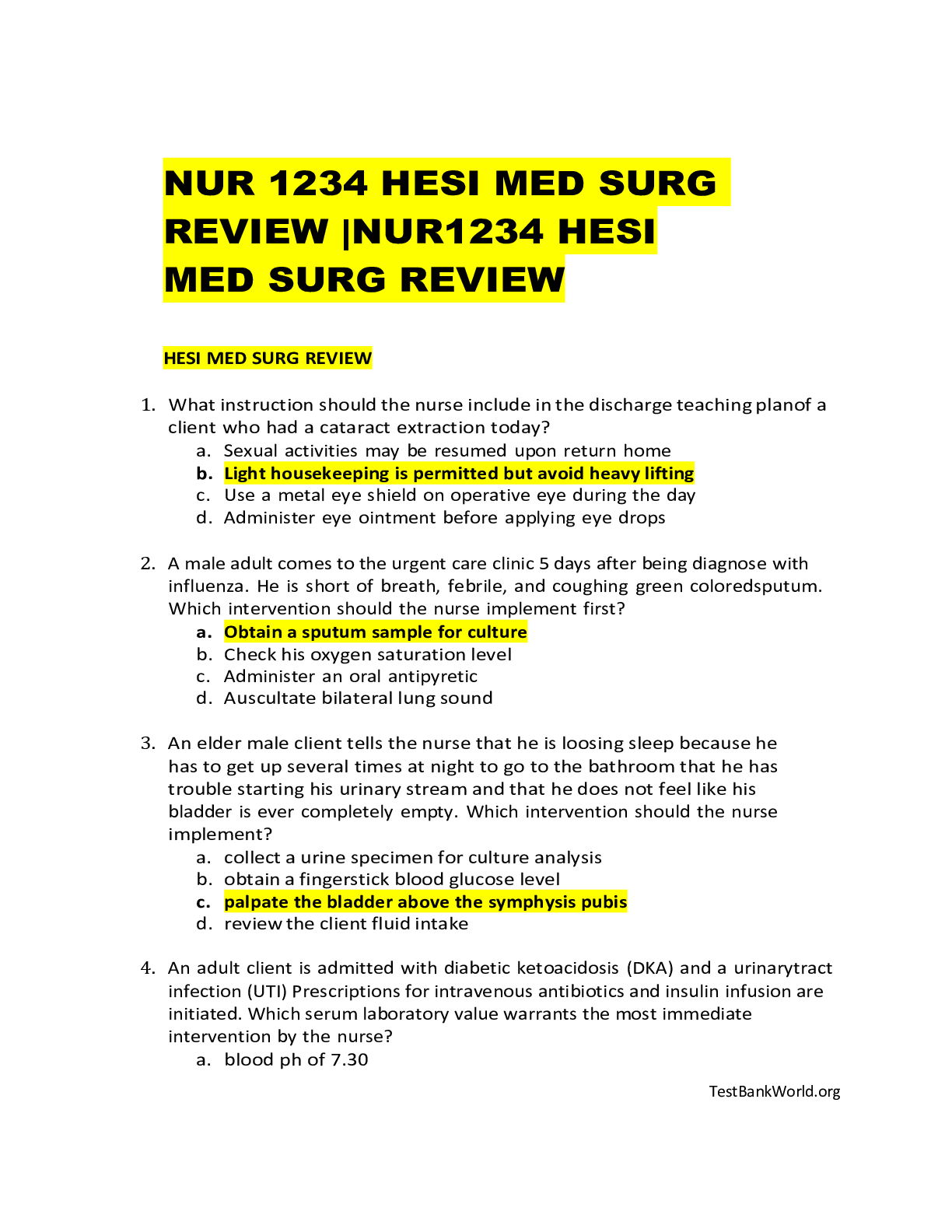
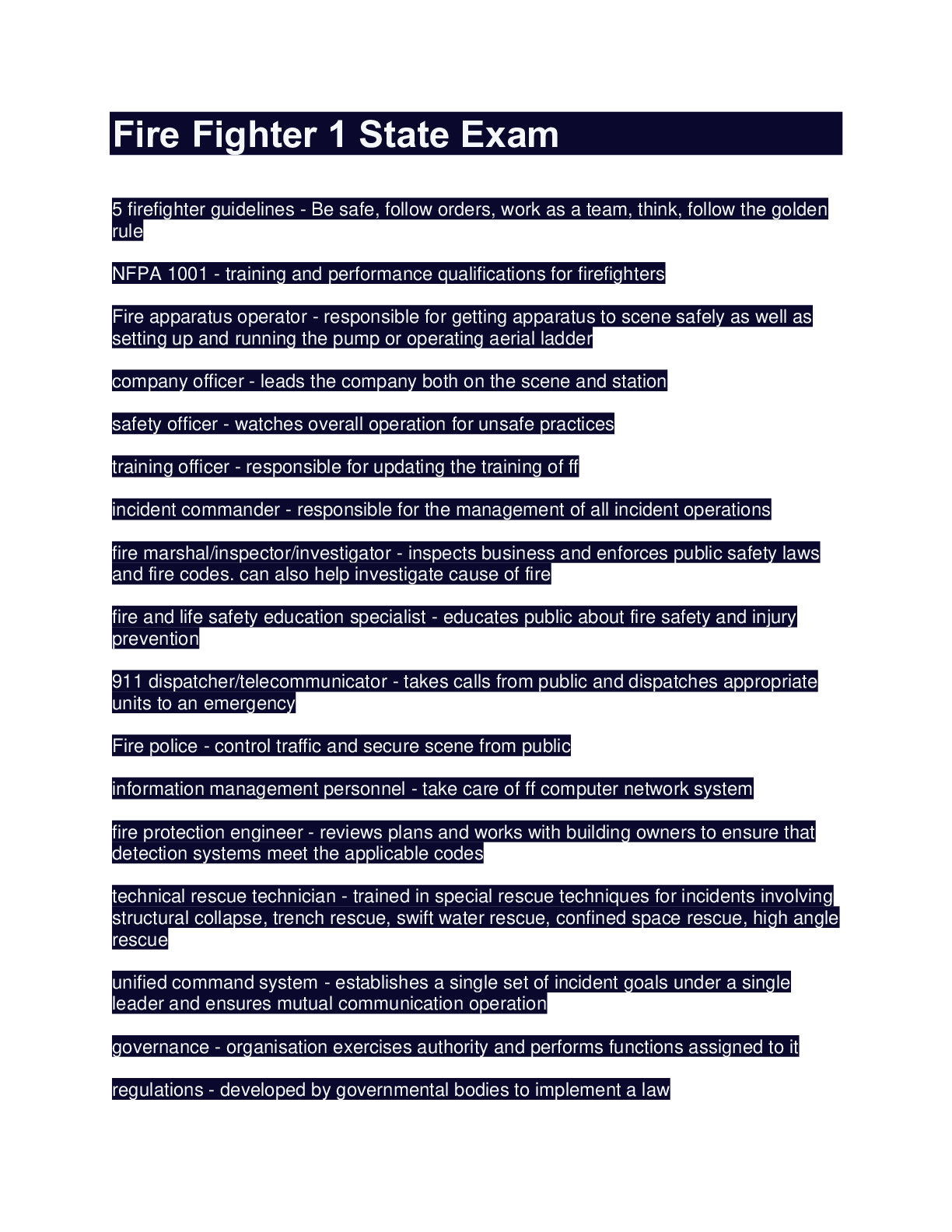
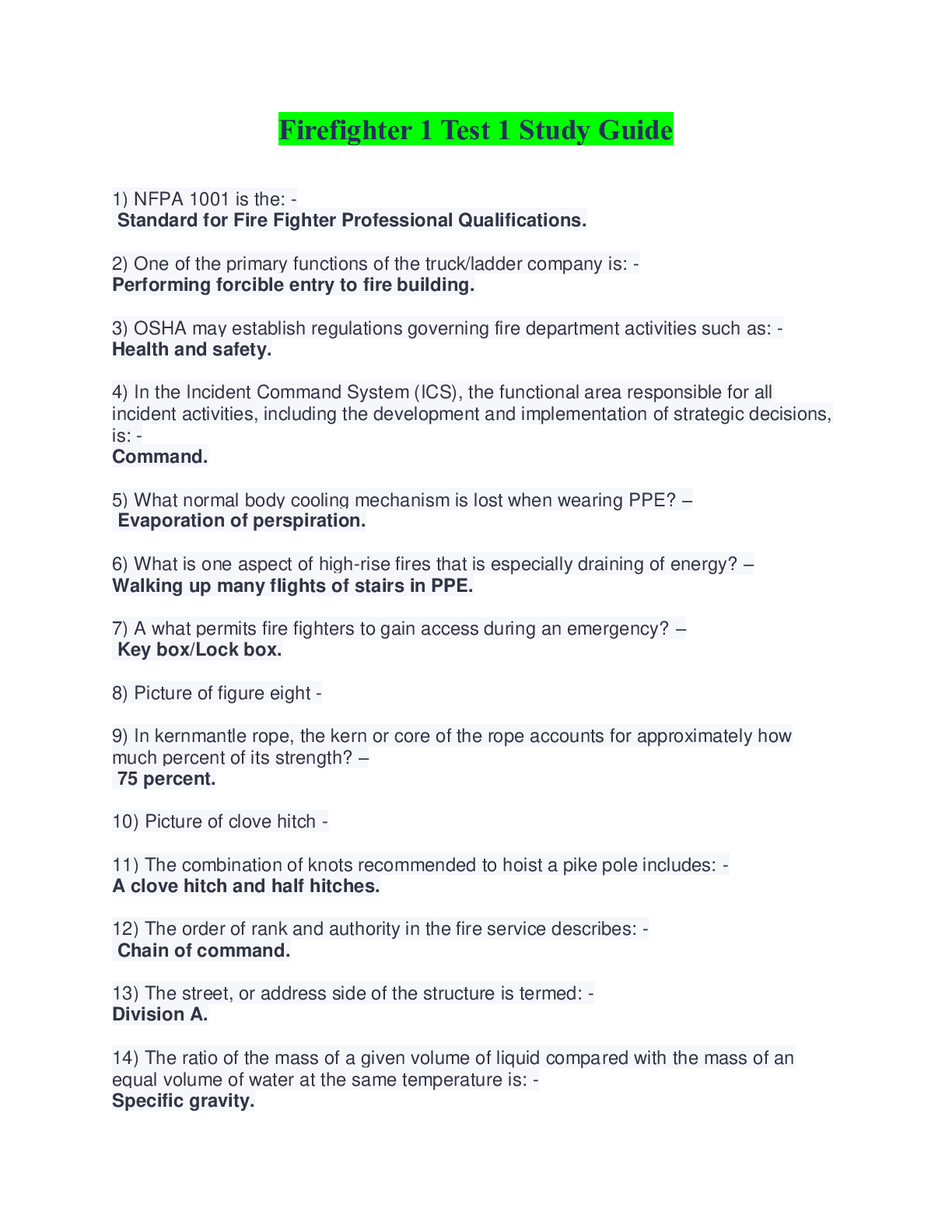
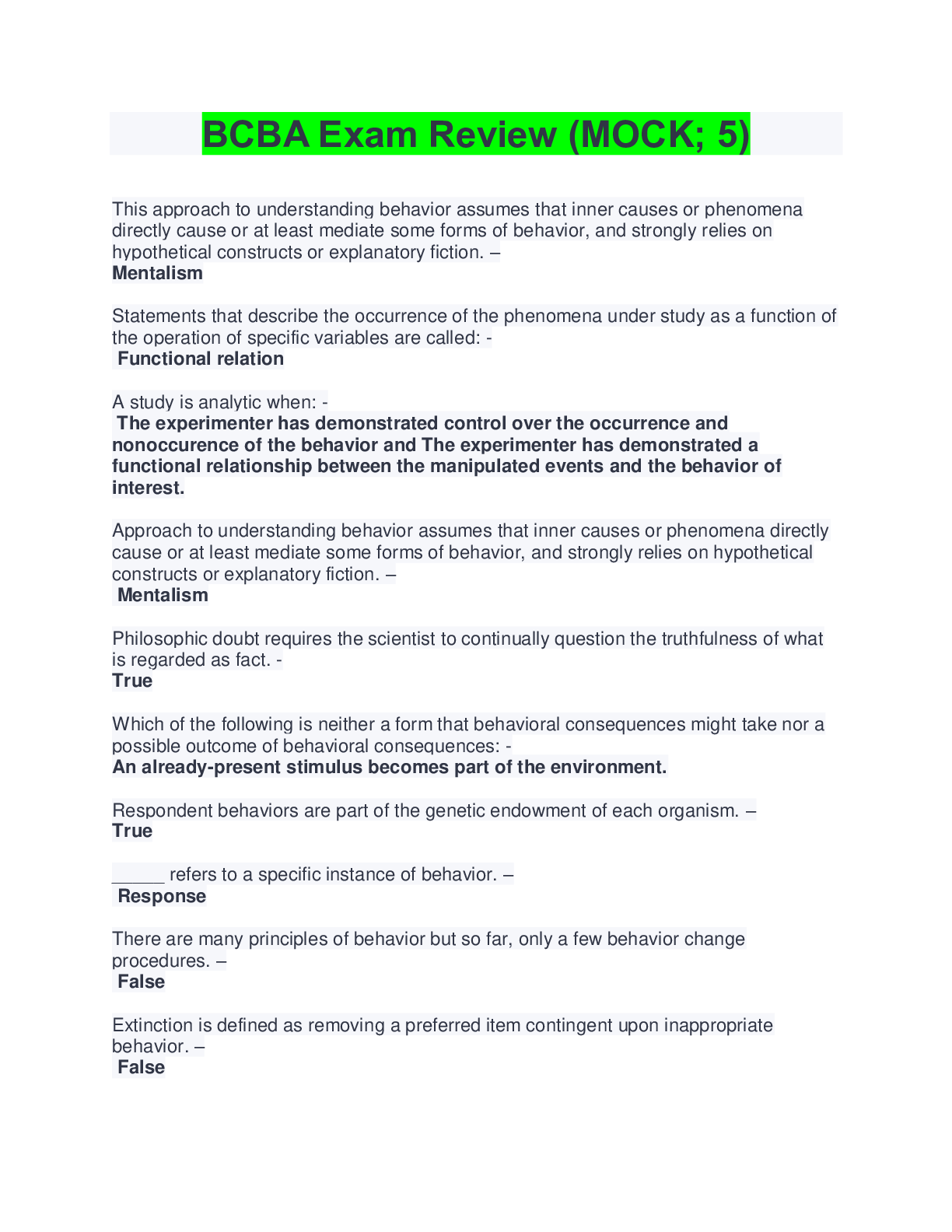

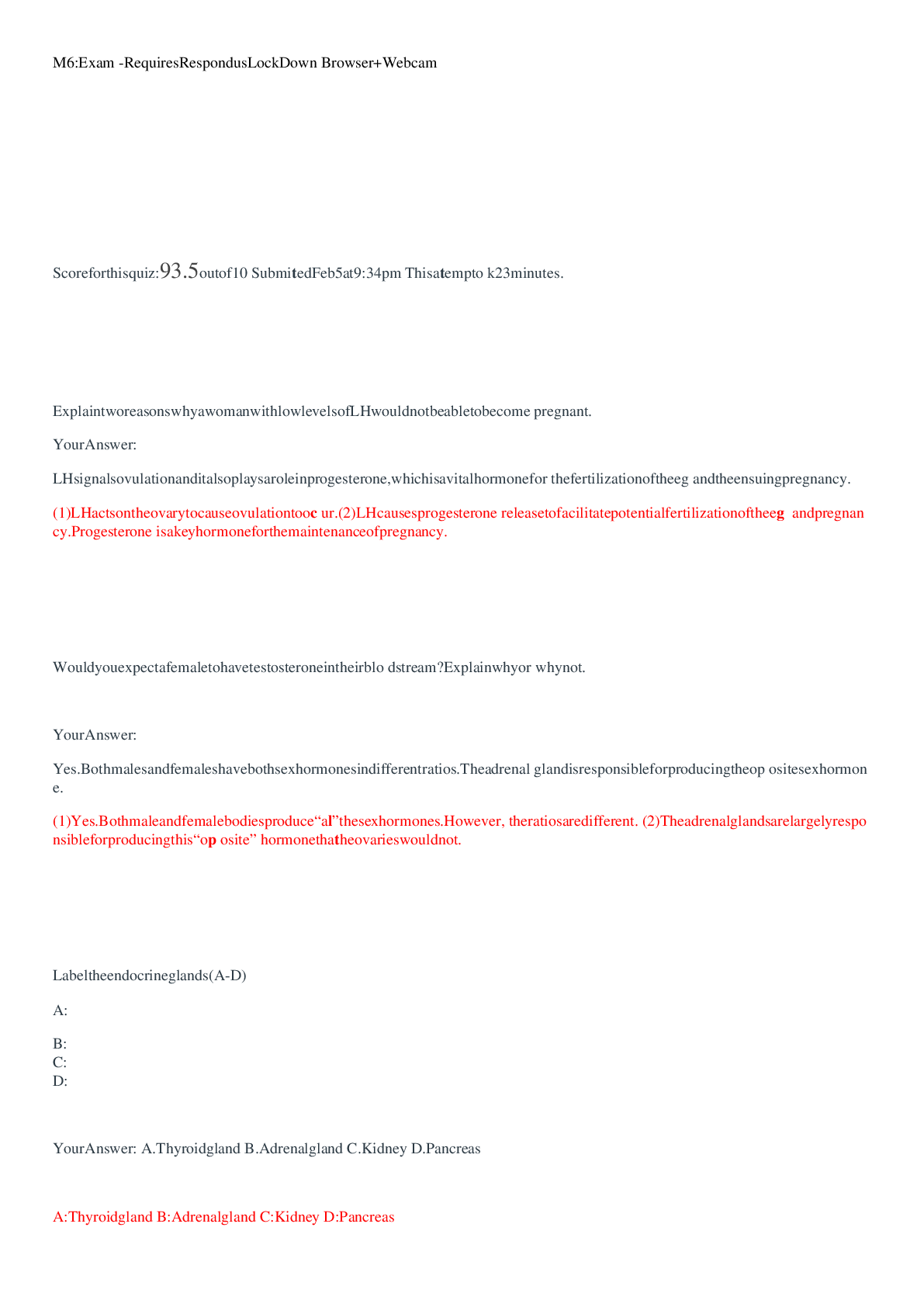
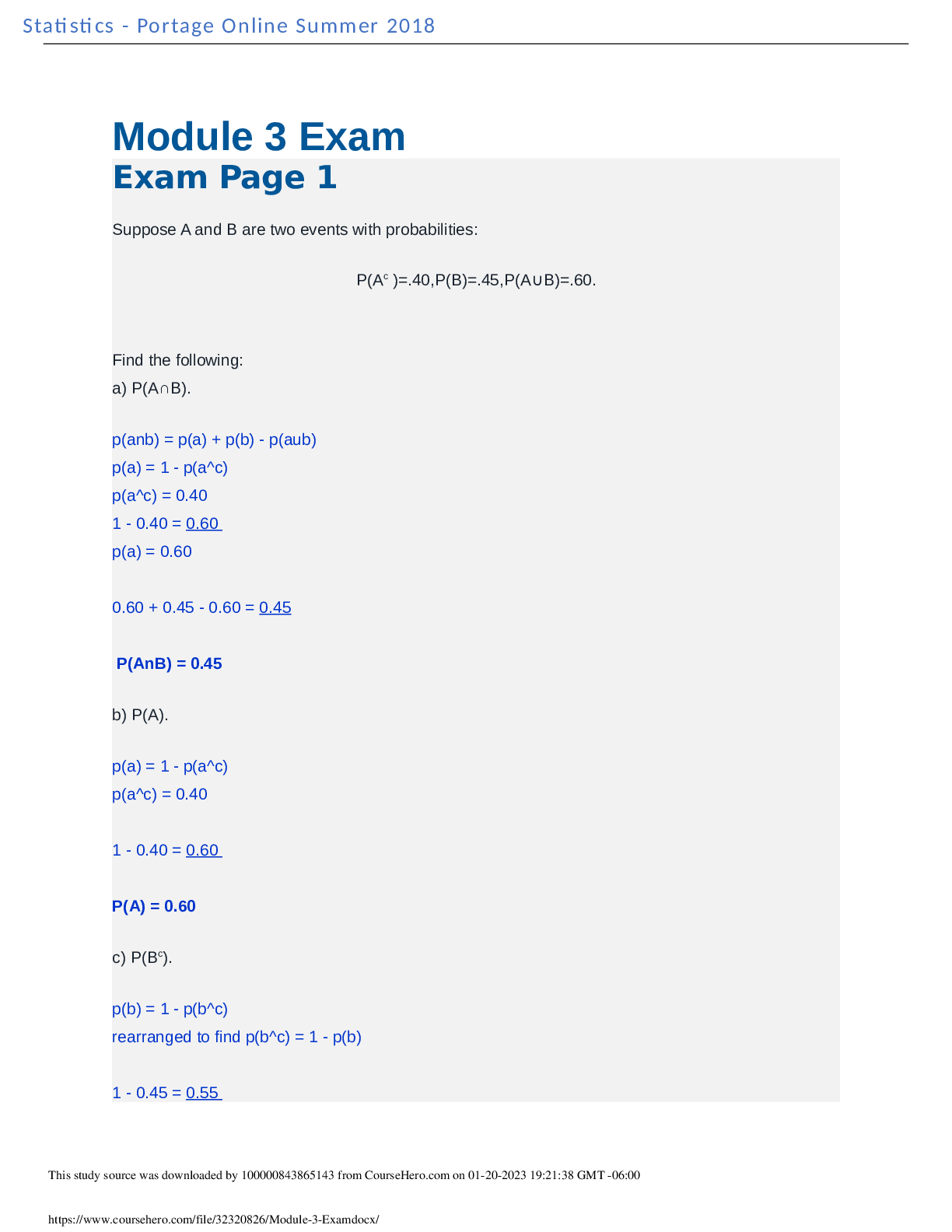
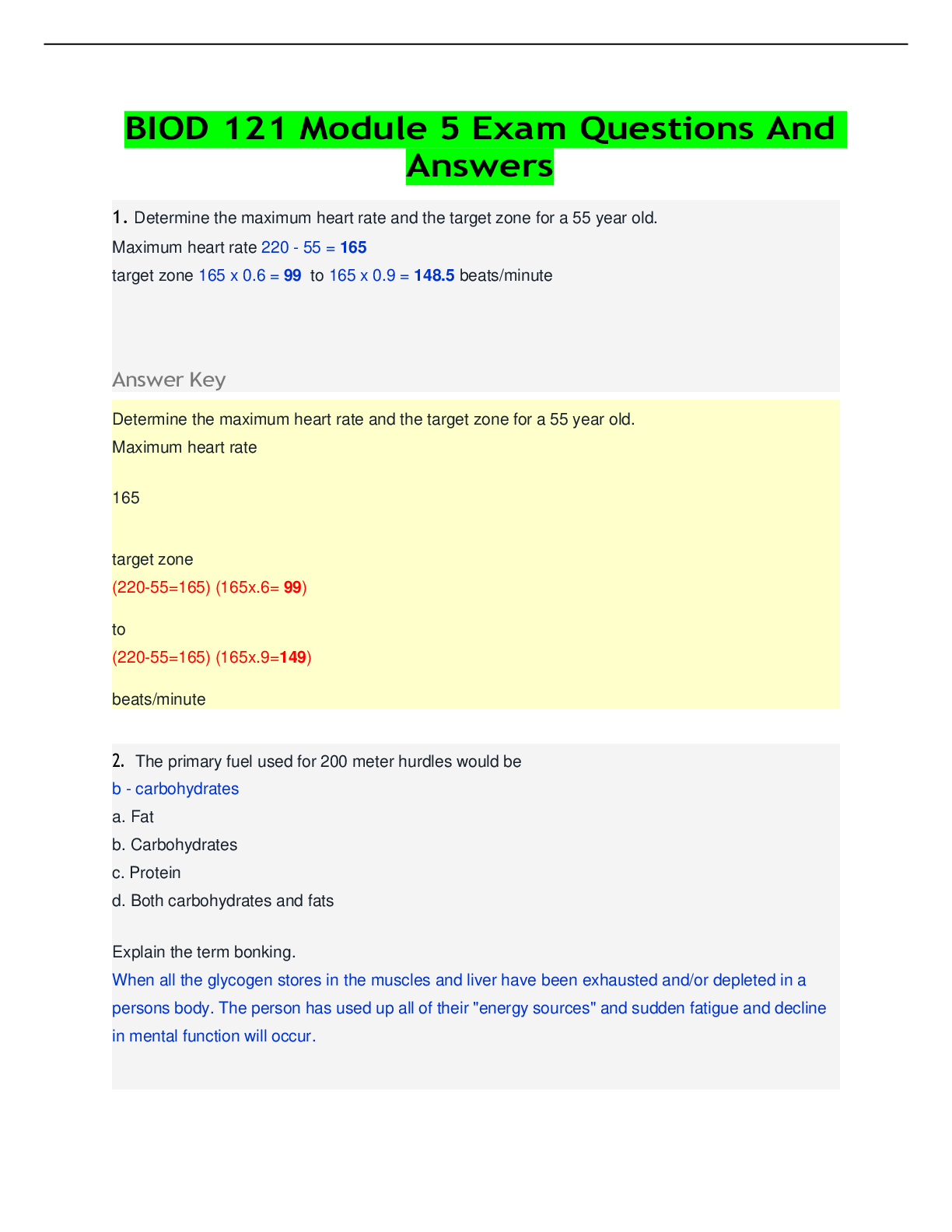
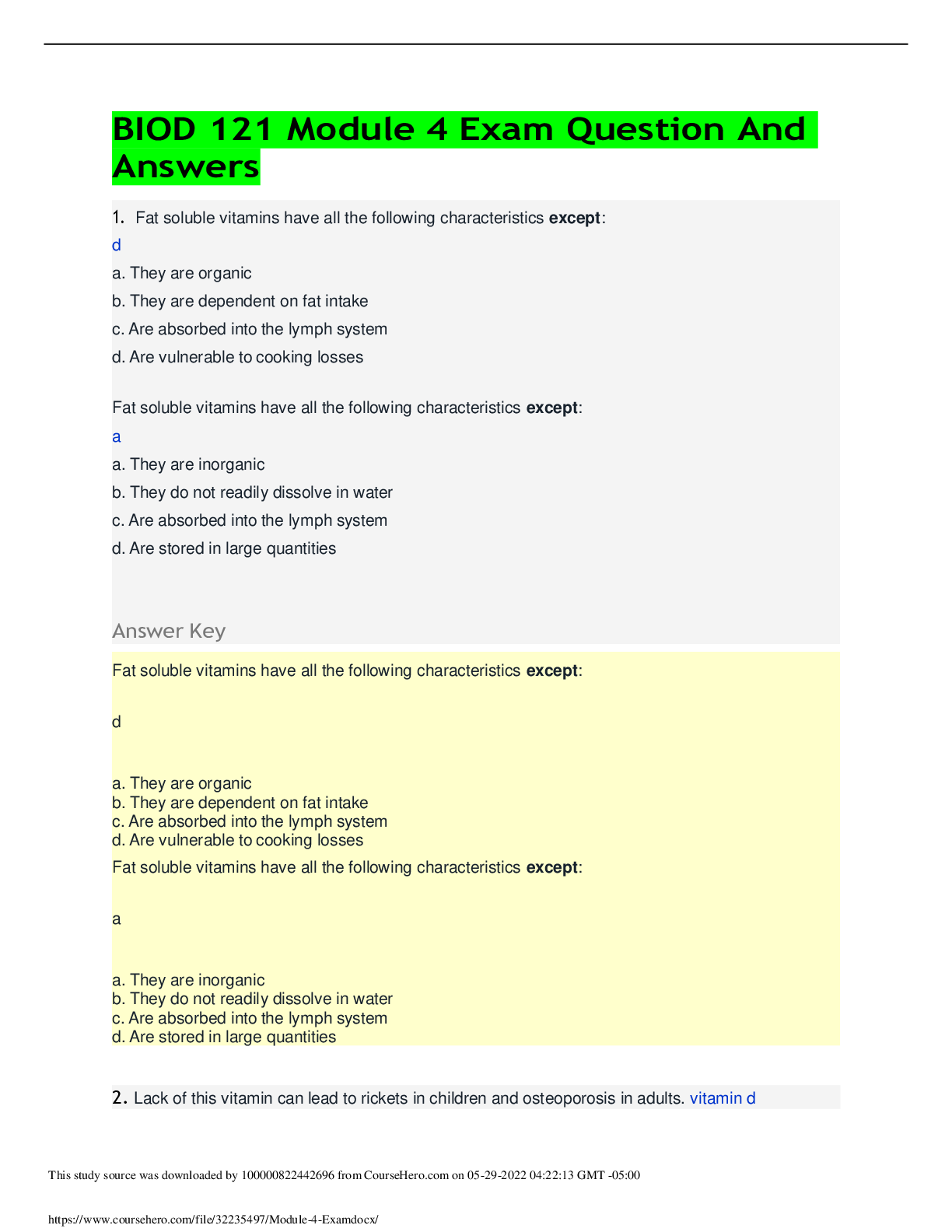
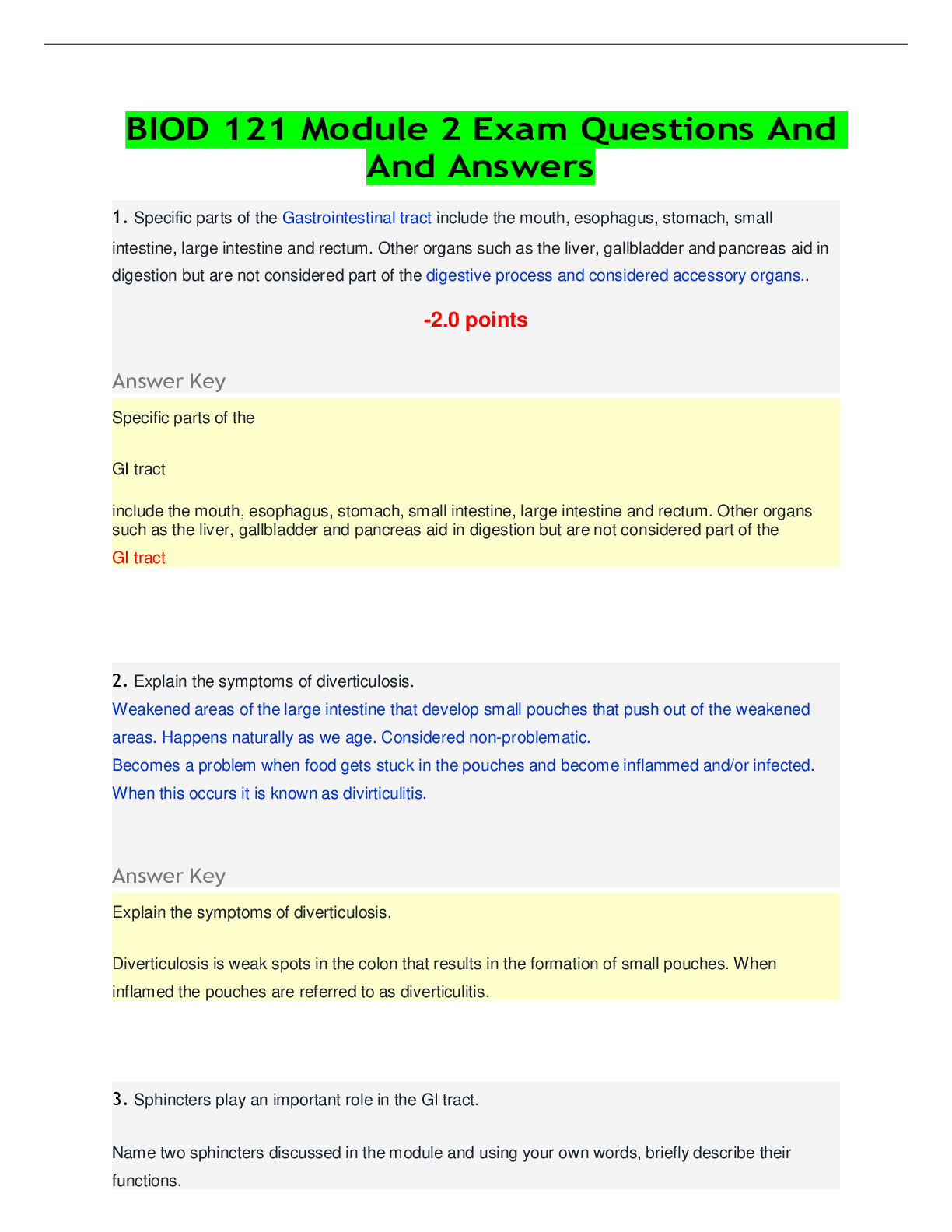
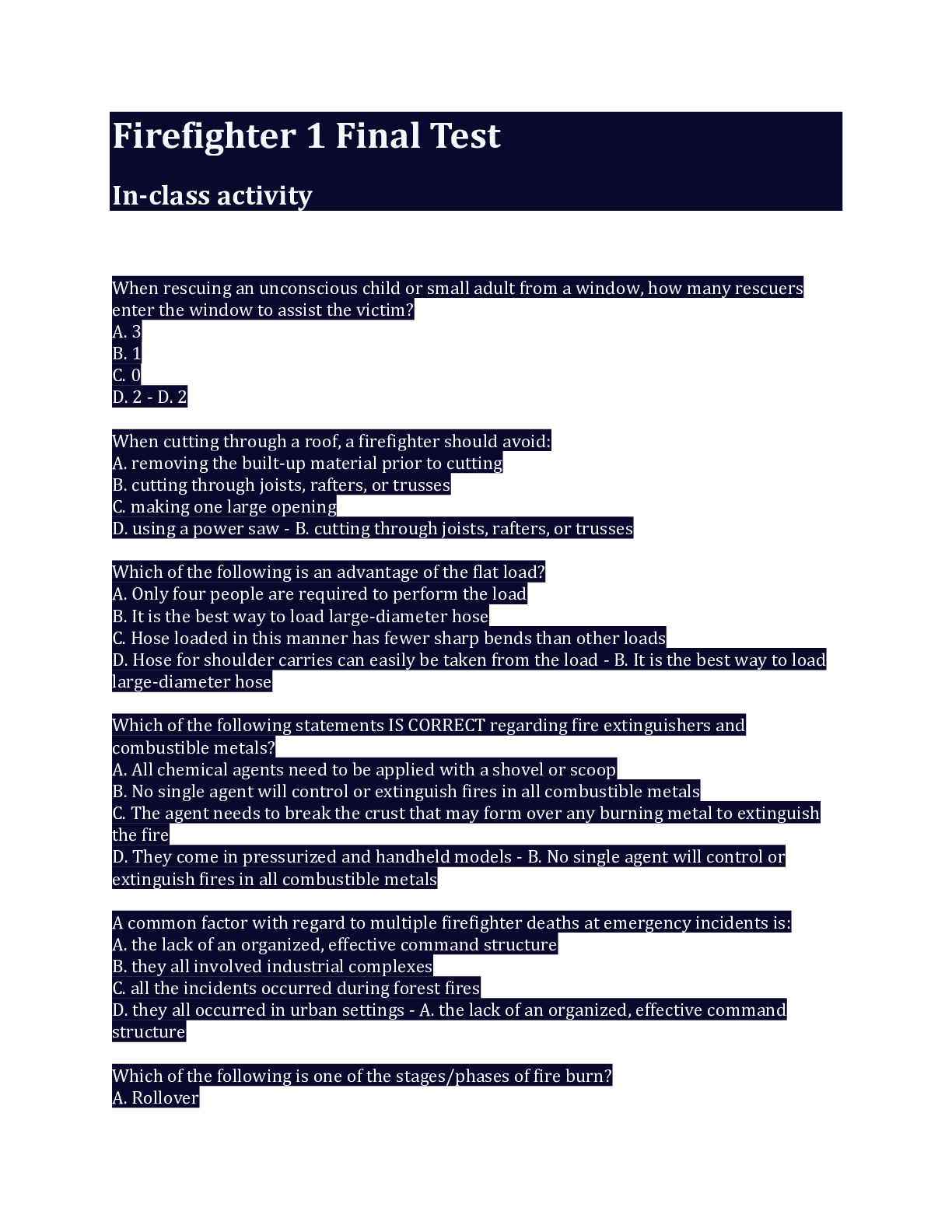
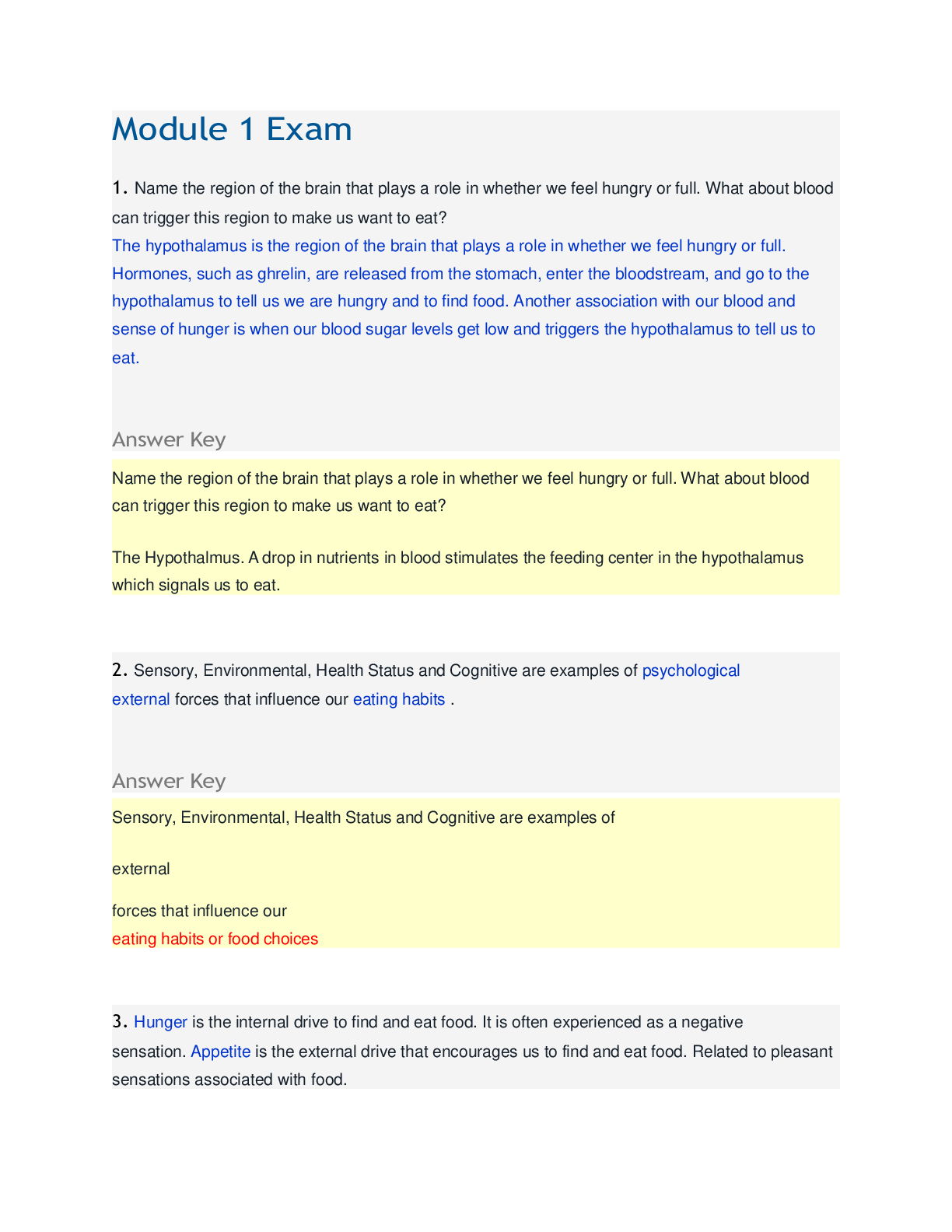
 (1).png)
 (1).png)
 (1).png)
